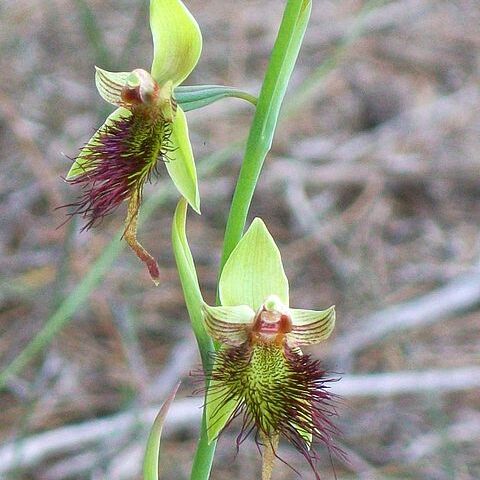Plant at fl. 15–90 cm. tall, slender to quite stout. Stem erect. Lf acute, overtopped by raceme, inclined to be fleshy; cauline bracts similar but much shorter. Floral bracts narrow, acute. Per. mostly greenish, except for bright reddish beard of labellum. Dorsal sepal 1–1.5 cm. long, broad-elliptic, acute, ± folded about column; lateral sepals little smaller. Petals shorter, obliquely deltoid, subacute tip directed towards dorsal sepal, us. striped. Labellum almost 2 × sepals; bare ligulate apex long and often straight; disc broad with dense long processes; base covered with very small, acute calli and on each side a short, erect, intra-marginal plate-like callus. Column-wings without basal glands.
A small orchid. It has a single leaf. This is narrow a folded with a keel along its length. It is 18-21 cm long by 1 cm wide. The flower stem is 30-40 cm tall. There are small leaves along the flower stem. The flowers are 2-2.5 cm across. The tubers are white and 3 cm long by 1 cm wide.

